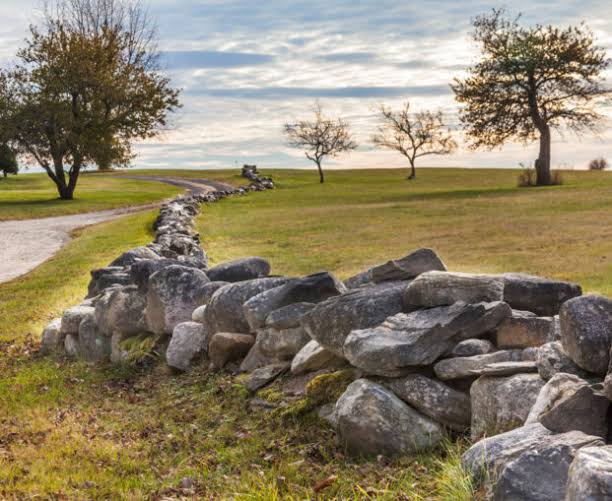Most fences in early colonial Massachusetts were a combination of stone and wood, usually reaching four to five feet high.
These stonewalls were dry, made without mortar, as the limestone needed for the bonding mortar was an extremely limited commodity. Any available limestone was used either for house plaster or for restoring soil.
A stone fence surrounding the colonial animal pound in Atkinson, NH. Stone fences typically surrounded cemeteries, cow pastures , farms, or animal pounds According to Allport, by the early 1650’s the colony of Massachusetts had already enacted legislation mandating farmers to build fences to a minimum height to separate their livestock from other farmers’ crops or a neighbor’s prized livestock.
Most towns in colonial Massachusetts had fence requirements between four and five feet. To enforce these regulations each town was to employ at least two “fence viewers”. (for example, see the Town Minutes in Sarah O’Shea’s research paper).
The responsibility of the fence viewer was to monitor all fences in the community in regards to both height and condition. Fines would be levied if the standards were not maintained. Eventually, town pounds were built for livestock that strayed onto other farmers’ properties. The pound keeper set the fine to be paid before the offending livestock could be “bailed out” to its owner.
Massachusetts all fence measurement requirements were in units called “chains” or “perches”.
The term “chain” originated from the surveying invention of Englishman Edmond Gunther in 1620. Gunther’s chain is a predecessor of the tape measure.
The chain was sixty-six feet long, consisting of 100 links measuring approximately 7.92 inches apiece. Many modern day units of measure, including furlongs, acres, and miles, are based on Gunther’s sixty-six foot chain.


